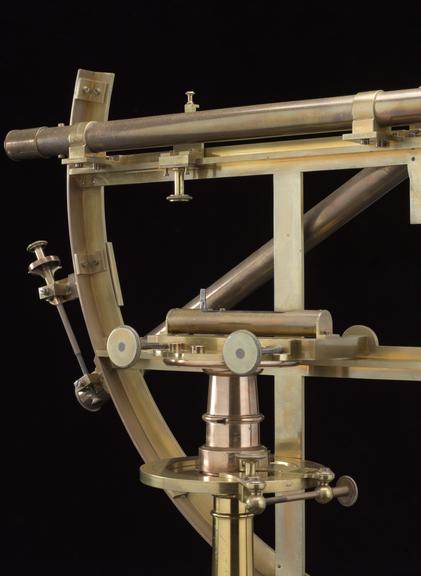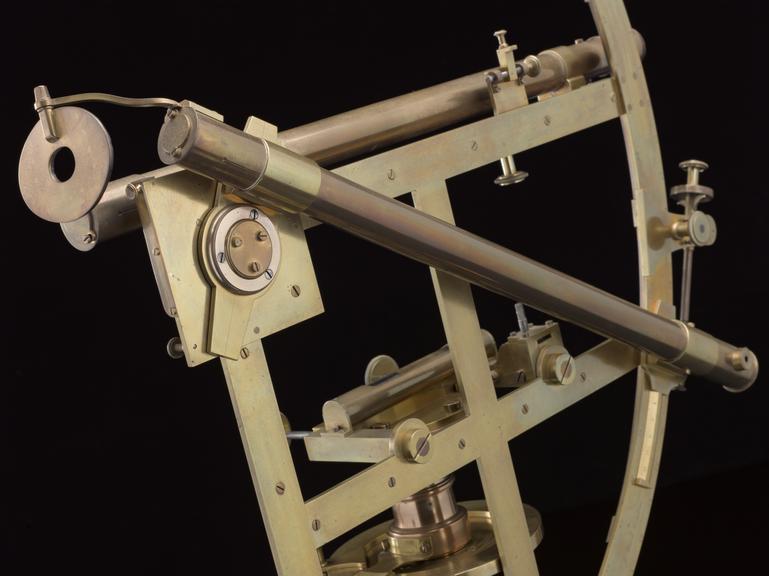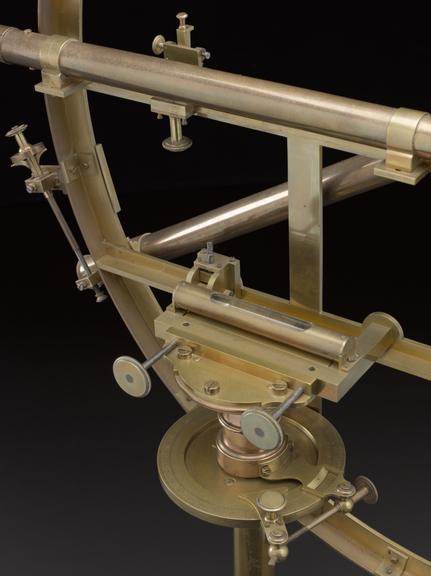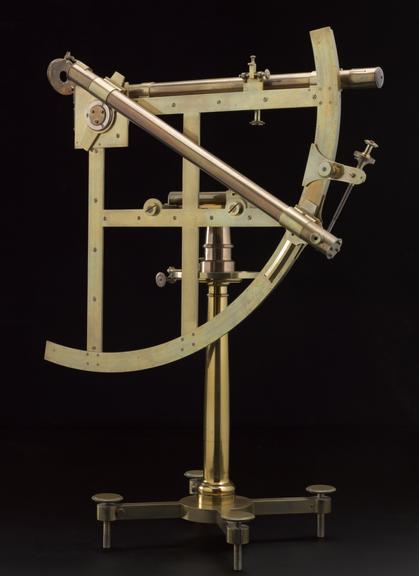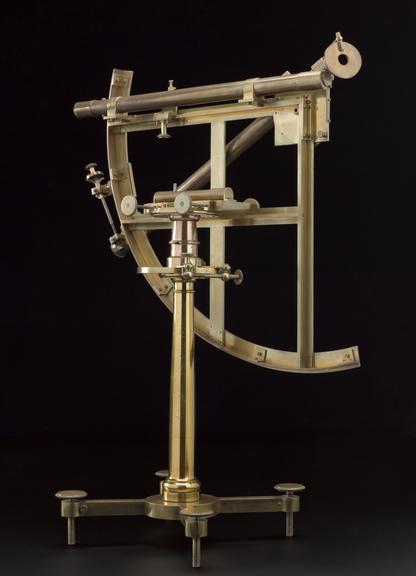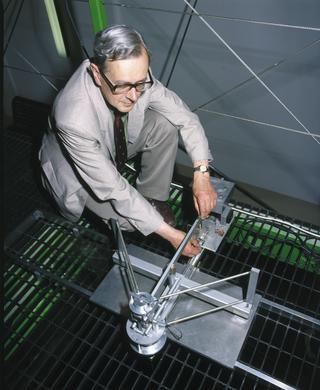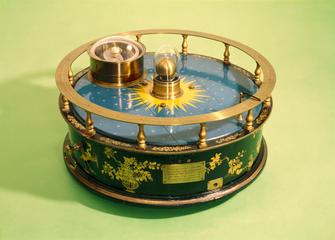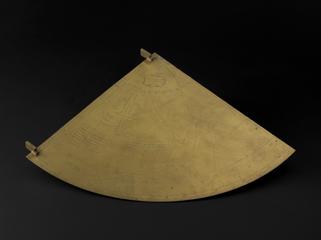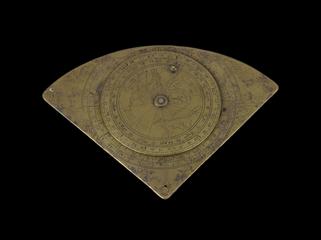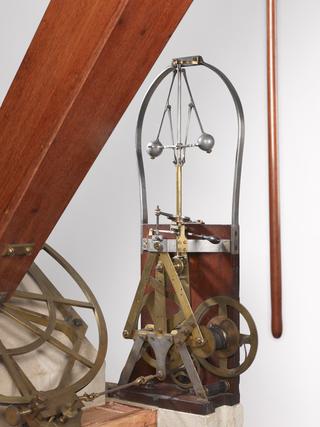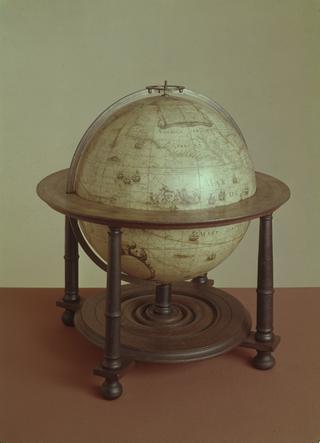Twelve-inch quadrant by John Bird
Twelve-inch quadrant on pillar stand with two plumb bobs, two glass beakers and two detachable reading microscopes, by John Bird, Strand, London, England, 1760-1769. This instrument has its original mahogany case. This type of quadrant was used by Lieutenant (later Captain) James Cook during his first voyage of exploration aboard HMS Bark Endeavour (1768–1771).
More
Quadrants such as these were used to measure the altitudes of the Sun and stars. Lieutenant James Cook took an instrument similar to this – possibly this very one – on his expedition to the South Pacific island of Tahiti, from where he was to observe the transit of Venus across the Sun in 1769. Upon arriving on the island, Cook’s party used their quadrant to set the time of their astronomical regulator clock, and to determine precisely the position of their observatory.
- Object Number:
- 1876-572/1
- type:
- quadrant - optical
- Image ©
- The Board of Trustees of the Science Museum








